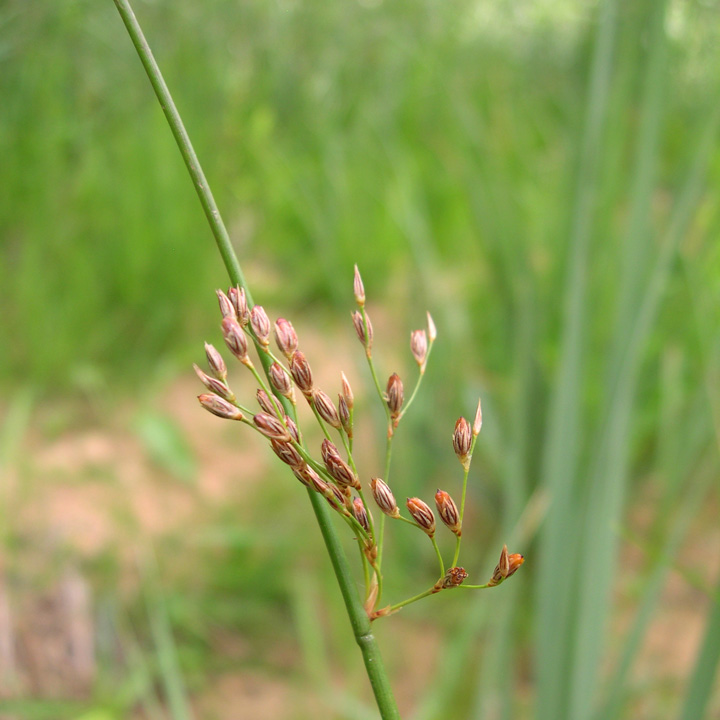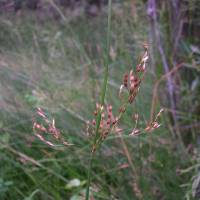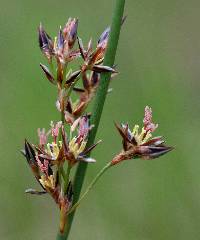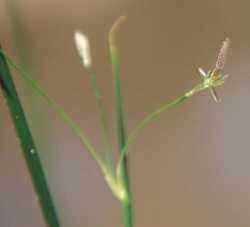- Home
- Search
- Images
- Datasets
- Sample Use
- How to Cite
- Additional Information
- About NEON
- NEON Data Portal
- ASU Biocollections
- About Symbiota
|
|
|
|
Family: Juncaceae
|
FNA 2000 Common Name: mountain rush Duration: Perennial Nativity: Native Lifeform: Graminoid General: Rhizomatous perennial with long-creeping rhizomes, stems erect, 20-100 cm tall, 1-3 mm in diameter, several cataphylls. Vegetative: Usually no blades. Inflorescence: Subtending bract usually several times longer than inflorescence appearing like an extension of the stem, appearing lateral, six to many flowered, loose to congested; tepals blackish to light brown, occasionally paler, 3.5-5.5 mm, margins clear, inner series loosely subtending capsule at maturity; capsules 3-locular, oblate to narrowly ovoid, 3.5-4 mm, equal to or exceeding perianth, seeds dark amber, oblate to ellipsoid, 0.5-1 mm. Ecology: Found in moist soils along streams, in wet meadows, marshes, often in alkaline soils from Distribution: Mst of N. Amer. except the southeast; south to S. Amer. and in Europe. Notes: This species is very complex and reflects the morphological uncertainty of the root polyphyletic nature of this species. ITIS and Plants DB have lumped this species as J. arcticus ssp. littoralis,which includes every former incarnation of J. balticus. FNA identifies it as J. balticus, with the same long list of combined varieties. This treatment follows the predominance of collections in regional herbaria for its nomenclature and draws from the FNA description.Similar to J. mexicanus with infloresscence emerging laterally from the stem (actually a subtending bract >5cm long) but distinguished from J. mexicanus by the absence of, or reduction of leaves to the base, and a truncate leaf sheath, where J. mexicanus has 1-2 leaves and a leaf sheath with an obvious blade extending to near the inflorescence. Although some authors have suggested that J. mexicanus is simply a subspecies of this complex. Ethnobotany: The seeds were used for food, stems were used to weave baskets, mats, used in jewelry making, and there were some ceremonial uses. Etymology: Juncus comes from the Latin jungere, to join or bind, while arcticus means of or from the arctic, and balticus means of or from the Baltic sea. Synonyms: Juncus arcticus var. balticus Editor: SBuckley 2010, FSCoburn 2015 |





